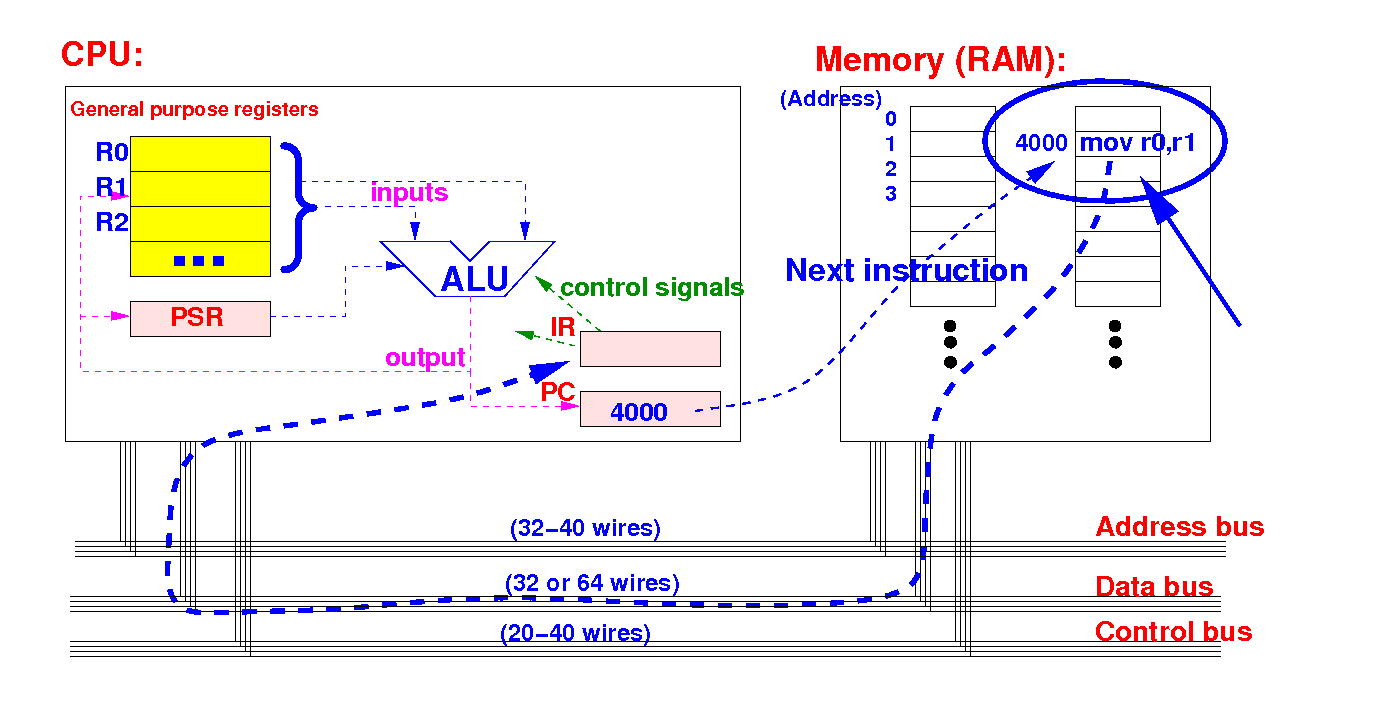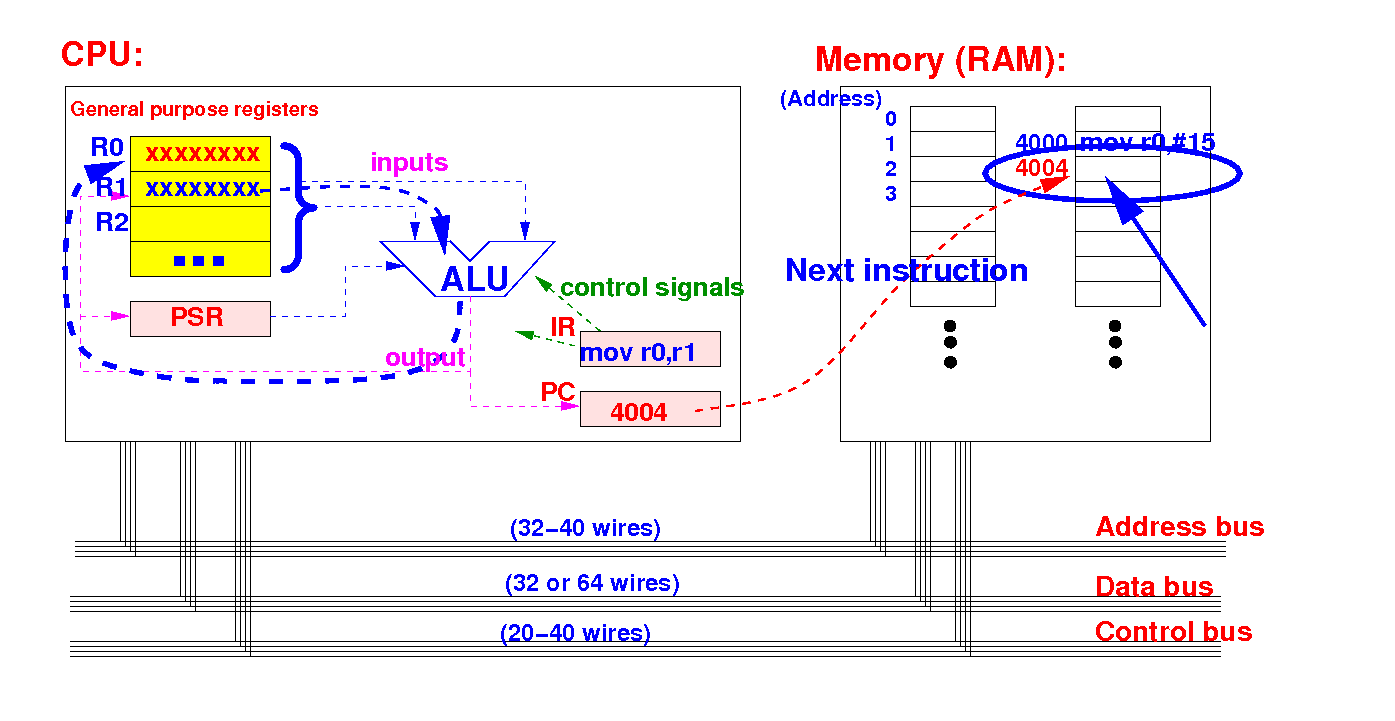The 2nd
usage of the mov
instruction
|
Example: copying data from one register into another register
Examples:
mov r0, r1 // Copies r1 into r0 (Assigns: r0 = r1;)
mov r3, r5 // Copies r5 into r3 (Assigns: r3 = r5;)
|
Example of the result of executing the instruction mov r0, r1:

How the
computer executes
the mov r0,r1 instruction
Suppose the next instruction executed is mov r0, r1:

The mov r0, r1 instruction is first fetched into the Instruction Register (IR) during the Instruction Fetch step
How the
computer executes
the mov r0,r1 instruction
Then the mov r0, r1 will be executed by steps 2,3,4 of the Instruction Execution Cylce:

The mov r0, r1 will store the value in R1 into register R0